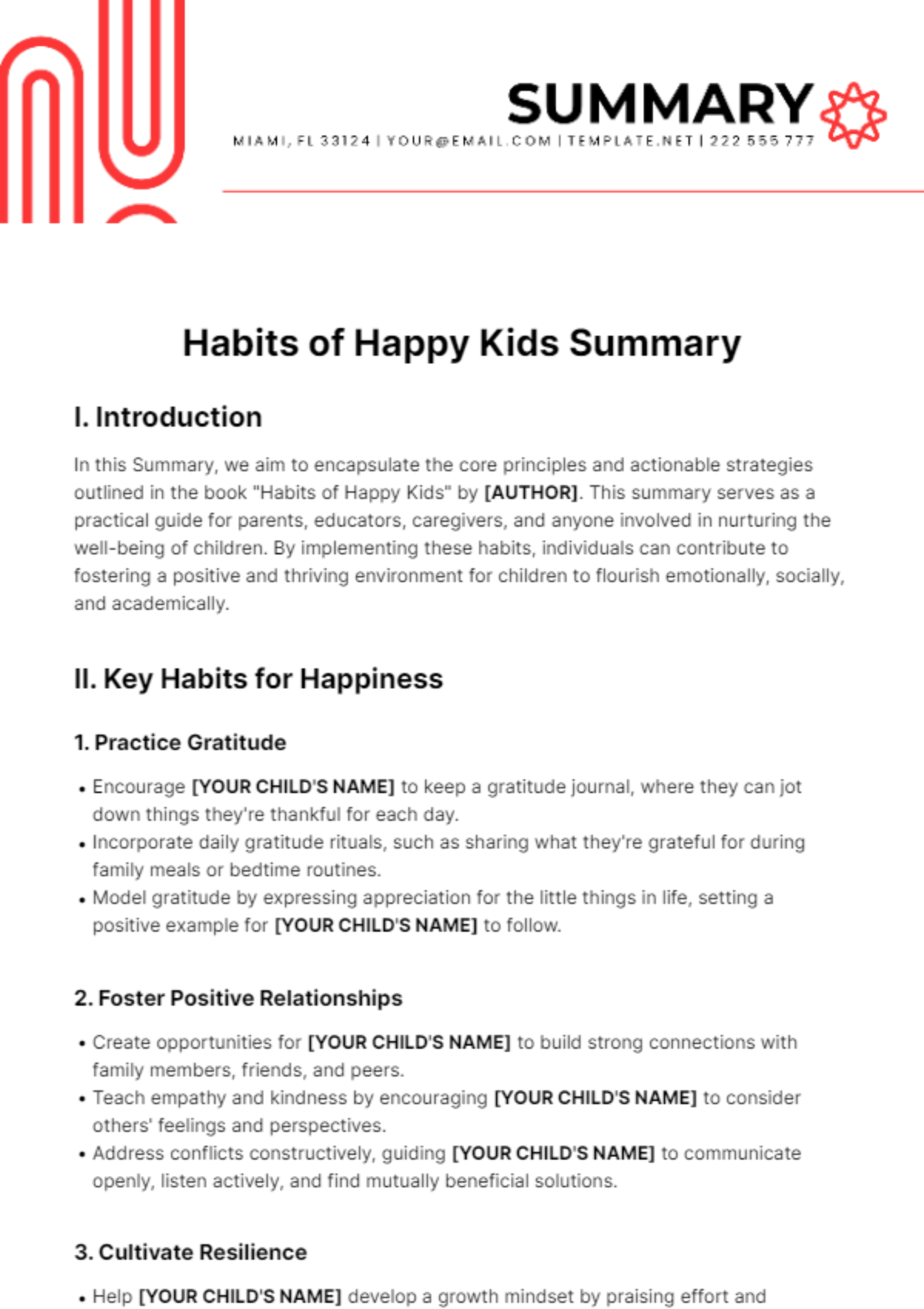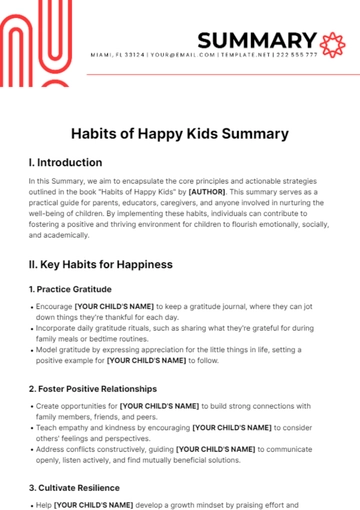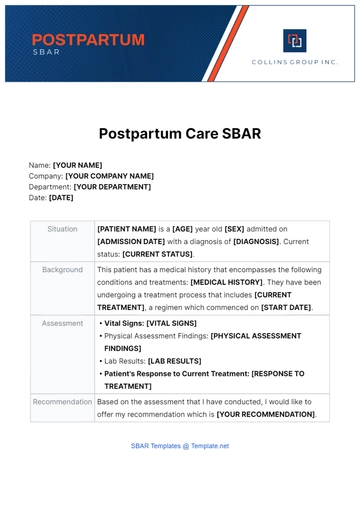Free Habits of Happy Kids Summary

I. Introduction
In this Summary, we aim to encapsulate the core principles and actionable strategies outlined in the book "Habits of Happy Kids" by [AUTHOR]. This summary serves as a practical guide for parents, educators, caregivers, and anyone involved in nurturing the well-being of children. By implementing these habits, individuals can contribute to fostering a positive and thriving environment for children to flourish emotionally, socially, and academically.
II. Key Habits for Happiness
1. Practice Gratitude
Encourage [YOUR CHILD'S NAME] to keep a gratitude journal, where they can jot down things they're thankful for each day.
Incorporate daily gratitude rituals, such as sharing what they're grateful for during family meals or bedtime routines.
Model gratitude by expressing appreciation for the little things in life, setting a positive example for [YOUR CHILD'S NAME] to follow.
2. Foster Positive Relationships
Create opportunities for [YOUR CHILD'S NAME] to build strong connections with family members, friends, and peers.
Teach empathy and kindness by encouraging [YOUR CHILD'S NAME] to consider others' feelings and perspectives.
Address conflicts constructively, guiding [YOUR CHILD'S NAME] to communicate openly, listen actively, and find mutually beneficial solutions.
3. Cultivate Resilience
Help [YOUR CHILD'S NAME] develop a growth mindset by praising effort and perseverance rather than just outcomes.
Encourage problem-solving skills by allowing [YOUR CHILD'S NAME] to face challenges and learn from mistakes.
Teach coping strategies such as deep breathing, positive self-talk, and seeking support from trusted adults when facing difficulties.
III. Implementing the Habits
1. Creating Daily Routines
Establish consistent routines for meals, sleep, homework, and playtime to provide structure and stability for [YOUR CHILD'S NAME].
Incorporate habit-building activities into daily schedules, such as a morning gratitude reflection or a bedtime storytelling session.
Involve [YOUR CHILD'S NAME] in setting goals and tracking progress, empowering them to take ownership of their habits.
2. Reinforcing Positive Behavior
Use positive reinforcement techniques such as praise, rewards, and encouragement to acknowledge [YOUR CHILD'S NAME]'s efforts and achievements.
Provide specific feedback and focus on strengths rather than weaknesses to boost [YOUR CHILD'S NAME]'s confidence and motivation.
Model the behaviors you want to see in [YOUR CHILD'S NAME], demonstrating kindness, resilience, and gratitude in your own actions.
IV. Conclusion
In conclusion, fostering happiness in children involves cultivating habits that promote gratitude, positive relationships, and resilience. By incorporating these habits into daily routines and reinforcing positive behavior, parents, educators, and caregivers can contribute to the holistic well-being and development of [YOUR CHILD'S NAME]. It is through consistent practice and modeling of these habits that children can grow into emotionally resilient, socially adept, and content individuals who thrive in all aspects of life.
Summarized By: [YOUR NAME]
- 100% Customizable, free editor
- Access 1 Million+ Templates, photo’s & graphics
- Download or share as a template
- Click and replace photos, graphics, text, backgrounds
- Resize, crop, AI write & more
- Access advanced editor
Discover the ultimate tool for nurturing joy in little hearts with the Habits of Happy Kids Summary Template from Template.net. This editable and customizable resource empowers you to tailor summaries effortlessly, editable in our Ai Editor Tool, fostering positivity and growth in children's lives. Elevate their happiness journey today!





